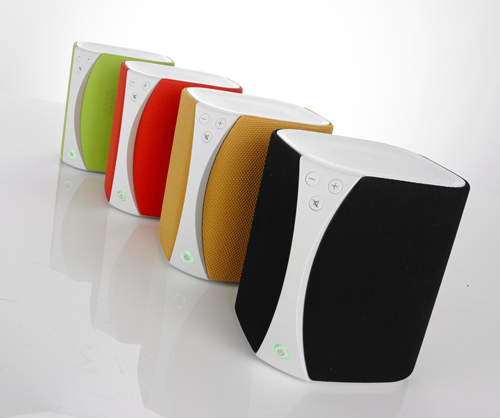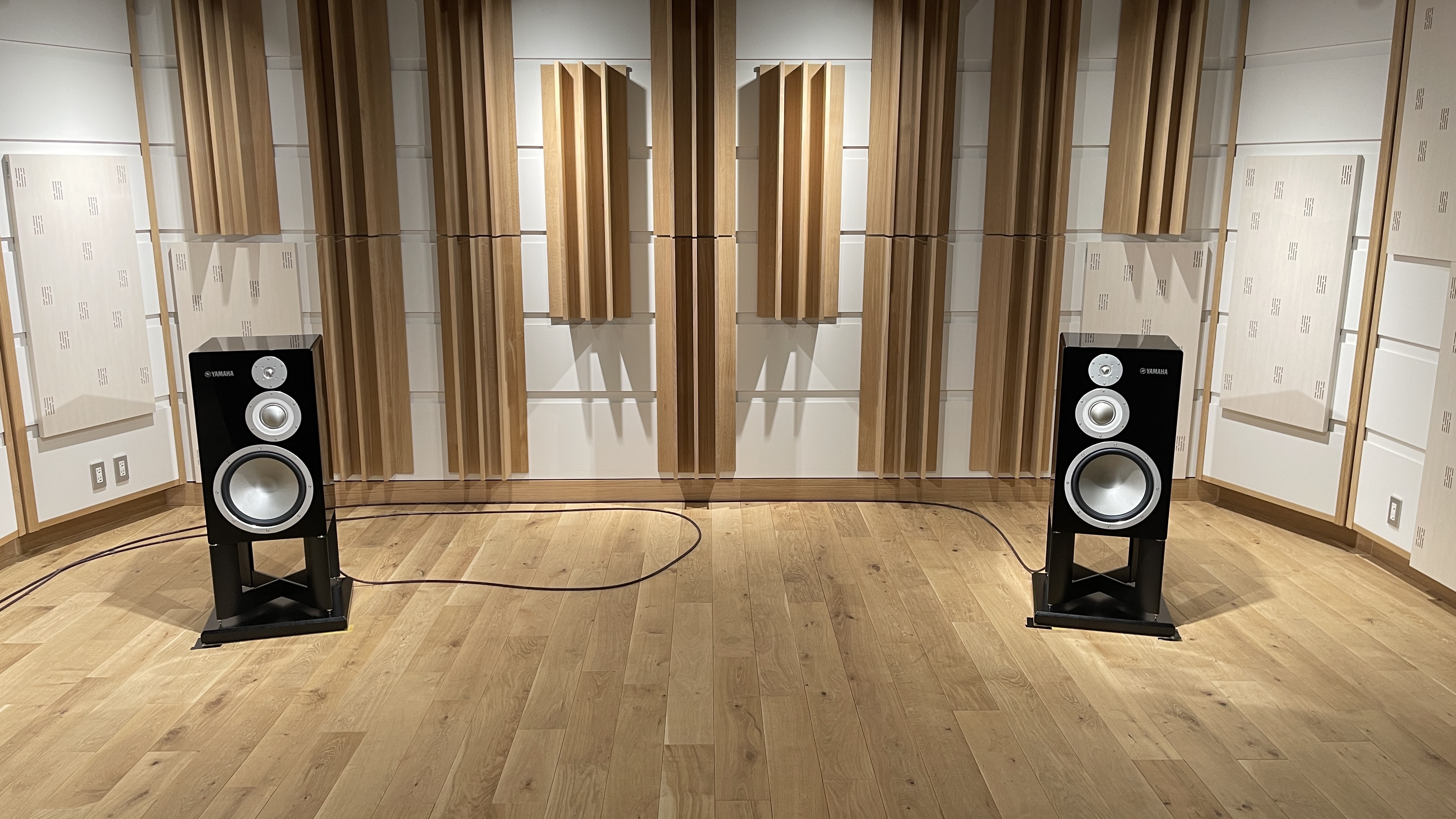What Hi-Fi? Verdict
Great sound, affordable multiroom smarts and 10 hours of wire-free portability make this little speaker a real gem
Pros
- +
Large sound that belies its size
- +
Detailed
- +
Well balanced
- +
Well designed
Cons
- -
A little unforgiving with poorer quality tracks
- -
Multiroom only available through Pure Connect app
Why you can trust What Hi-Fi?
The market for simple, wireless multiroom audio has long been dominated by Sonos, but Pure has launched a bid to change that with the Pure Jongo S3.
As the company continues to expand its product portfolio beyond its DAB radio roots, it used CES in Vegas earlier this year to unveil its own affordable – not to mention colourful – solution to wireless multiroom music in the shape of the Jongo wireless speaker family.
The Jongo S3 is the first member of the Pure Jongo family to officially launch – it’s a small, portable speaker that can be used alone or as part of a multiroom set-up. The question is, is the S3 good enough to lead the way for the rest of the Jongo line-up coming later this year?
Pure Jongo S3 review: design
The Pure Jongo S3 is a compact little thing, making it easy to dot around the various rooms of your house (though we’d probably wait for the bigger Jongo T6 for the largest rooms).
Its built-in rechargeable battery makes it game for rooms that are usually off limits to music systems too, such as bathrooms, and also gives you the freedom to take it out into the garden or away on holiday – a proper portable wireless speaker, then.
To look at, it’s a round-edged cube shape speaker that stands just taller than an Apple iPhone 5. It’s available in two different colour choices – either as a black or white base unit, both fitted with black mesh grille covers.
These grilles are removable, though, and a range of more colourful covers, including green, red and yellow, is available separately.
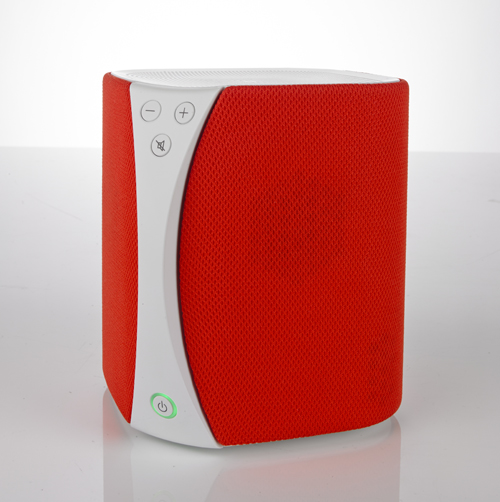
Four 19mm tweeters sit beneath these covers – one on each side of the cube – and there’s a 9cm upward-facing subwoofer to handle the low-end.
At 1.25kg, the Jongo S3 is weighty enough to make it feel like a durable, quality product, but it still feels portable enough to put in your (fairly large) bag.
It’s ultimately a very clean, minimalist and modern-looking design, with only volume, mute and power buttons on its front-facing control panel. The finish underneath the grilles leaves a little to be desired in some places, but considering that’s never on show apart from when the covers are being changed, it’s not a huge problem.
Pure Jongo S3 review: features and connectivity
With the S3, you have the choice of playing music either over wi-fi using the Pure Connect app or via Bluetooth if you want to use services like Spotify or Rdio.
The benefit of playing through the Pure Connect app is that this is the only way you’ll be able to take advantage of, and control, the Jongo S3’s multiroom capabilities, meaning there’s no multiroom support for third party streaming services like you’ll find with Sonos.
At the time of writing, only the iOS app was available, though we’re told that an Android version is coming soon. There’s more information about Pure Connect later in this review…

Bluetooth feels like it may have been something of an afterthought with the Jongo S3, as it’s included in the shape of a removable wireless dongle that protrudes from the device’s USB port. It’s a bit of a shame considering the clean design everywhere else on the S3, but is well hidden enough that it doesn’t affect the overall aesthetic, and certainly doesn’t get in the way.
Also on the back you’ll find the power socket (the Jongo S3 battery should last around 10 hours on a full charge), a 3.5mm input plus two buttons – one labelled wi-fi (to be used in the set-up process) and another labelled audio, which lets you pick one of four different audio profiles to suit the Jongo speaker's environment.
MORE: Pure Jongo A2 hi-fi adapter makes any system wireless
We favoured the “stereo 360-degree sound” profile for an indoor situation, but there’s also “stereo forward facing”, which shuts off the two back drivers for speakers placed close to a wall; “mono 360-degree sound”, best used when the Jongo S3 is placed in the middle of a room; and an “outdoor boost” mode, that does just what it says on the tin to boost all five drivers for strong outdoor performance.
If you get lost as to which one you’re on, a small LCD panel on the back of the S3 will give you a visual depiction, alongside what method you’re using to stream music, how strong the wi-fi signal is and how much battery is remaining.
Pure Jongo S3 review: setup
Getting your Jongo S3 set up on your wi-fi network requires a similar setup to Bowers & Wilkins wireless speakers like the B&W Z2, but without the nicely designed app to make it easy to understand for beginners (the Pure Connect app is streaming only).
If you have a WPS button on your router and it’s enabled for push-button configuration, getting the S3 online is much simpler. You’ll just need to press the WPS button, followed by the S3’s wi-fi button, and then wait for the light around the power button to go solid green to indicate that the connection has been made.
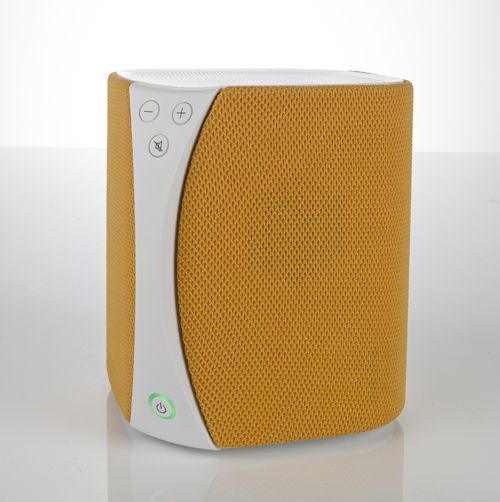
If not, follow the included instructions that guide you through the online process and you’ll be up and running within a few minutes, with any tablets or smartphones on the same network able to stream to the Jongo immediately via the Pure Connect app.
As for multiroom music, there’s no limit to how many Jongo speakers you can set up in your house, but each will have to be configured using one of the processes above. Of course, you only have to do the setup once per Jongo, and when it’s done, they will all appear in the Pure Connect app whenever you load it up in range of your network.
Pressing the ‘P’ logo near to the music controls will show you the Jongo speakers in streaming vicinity, and let you choose to stream a track to all or just some of them. You can also control their volumes independently or as a whole. Only one song can be streamed per device, though, so if you want The XX in one room and Wu Tang in another, say, you’ll need two separate devices running the Pure Connect app to make that happen.
Overall we found the whole multiroom process simple and intuitive, and had no problems streaming to any one of our speakers over our busy network.
It’s worth noting, though, that since the Jongo S3’s multiroom performance relies on wi-fi, you should ensure that your network is strong in all the rooms you want to place speakers in. A flaky signal will kill off any chance of a harmonious multiroom experience, so signal boosters might be needed, particularly for those in large houses.
Pure Jongo S3 review: sound
It has to be said that the Jongo S3 is capable of a much bigger sound than its physical size would have you think. It does a good job of spreading its sound wide with a surprisingly decent weight to it that stops it from ever sounding thin or lightweight.
Pure has managed to produce a really nice balance to things, and avoided going in too heavy on the bass – something many smaller speakers are guilty of. If we’re getting picky, it lacks a little of the refinement that its more expensive competitors show, but its overall performance demonstrates a solid and impressive sound.
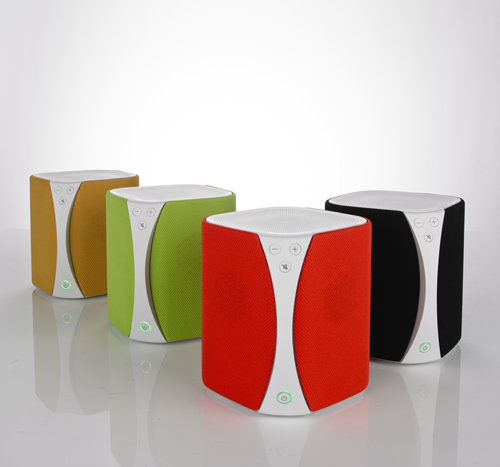
Blasting out Tensnake’s Coma Cat, the bass is tight and controlled, while the high, pulsing beat and finger-clicks manage to avoid sounding harsh. Vocals are clear, direct and well projected, and there’s an admirable amount of detail shown from top to bottom.
The Pure Jongo S3 doesn’t reach the kind of volumes that some pricier speakers can manage, but once again it goes surprisingly loud for its small proportions and price.
When streaming good quality music (320kbps or better), you can afford to push the volume up towards its maximum without it getting too shouty – though we’d only recommend that when it’s necessary. For relaxed solo listening, it’s much more enjoyable somewhere in the middle, and allows the instruments in the mid-range more space to breathe.
Change from streaming stored tracks to streaming the new Paramore album from Pure Music and there’s a noticeable difference in the S3’s performance. That’s because you’ll only get non-purchased material streamed at 128kbps, resulting in a drop in detail and an occasional harsh edge introduced to brighter-sounding tracks.
As such we’d certainly recommend that you stream your tunes at as high a bitrate as possible, as the S3 can be a little unforgiving with less-than-perfect recordings.
Pure Jongo S3 review: Pure Connect app
Don’t let its ‘Connect’ name confuse you – this app won’t help get your Pure device set up or connected to your wi-fi like some companion apps. Instead it serves as Pure’s new music control app for streaming wirelessly to Pure products like the Jongo S3, or indeed, used independently on your iPhone, iPad or iPod as well.
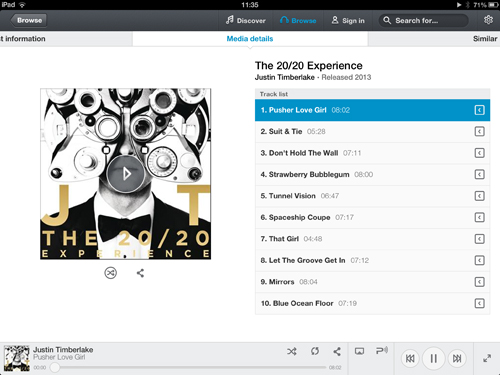
It’ll pull all the music stored on the device you’re using into the app, meaning you can browse your purchased content alongside 20,000 radio stations and 200,000-odd programmes and podcasts free of charge, plus the 15 million tracks available on-demand via the Pure Music subscription service, which costs £4.99 a month.
It’s nicely designed, with a very visual homepage that offers up music, radio and podcast recommendations based on your listening patterns. We found the service’s selection of tracks to be wide and varied, finding all the things we looked for, with even our more obscure searches yielding results.
You can buy the tracks you find or stream them online, though this will be restricted to 128kbps. This quality restriction is a bit of a shame, and puts it behind the likes of Spotify, which offers 160kbps as standard and 320kbps for premium subscribers. There’s no offline streaming, either, which is a missed trick.
Using the Pure Connect app over our – admittedly rather busy – network and streaming to the Jongo S3 was a smooth experience on the whole, though we did find a considerable delay between pressing the controls on our device and the S3 registering the commands.
We also had a rather strange but occasional issue that would, when we clicked to play a track, skip on to the track below instead – something that we’re sure could be sorted with a software update.
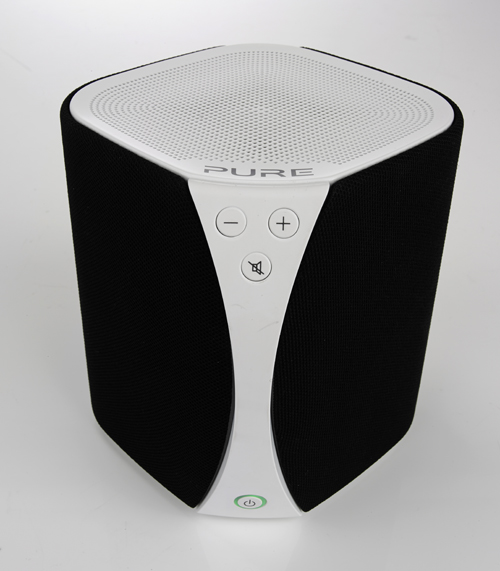
The idea of Pure Connect works best when used in association with a Pure device – in particular a Jongo multiroom setup. The Pure Music streaming service is competitively priced though not as well-featured as other more established names on the market, making it difficult to recommend as a standalone service.
However, accompanying a Pure product (and we’re sure that’s its main focus), it’s a great sidekick, and aside from a few early stability issues the app is well-designed, well-featured and easy to use. Overall, it’s a job well done.
Pure Jongo S3 review: the Jongo family
The Jongo S3 is just the first product to fly from Pure’s multiroom nest, so we can expect it to grow, and soon. We already know about two more Jongo devices in production – the T6 speaker and the A2 hi-fi adapter.
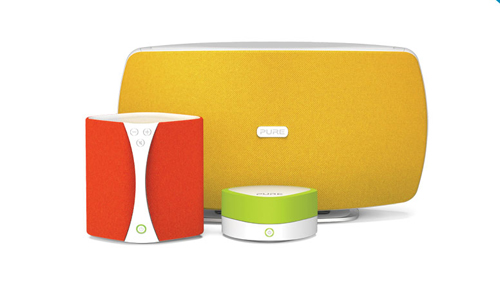
The T6 will be the big brother of the set up, offering a larger sound for filling the bigger rooms of the house. The Jongo A2 adapter, on the other hand, will handily turn any existing hi-fi into part of the multiroom system: you stream content to it like any other Jongo speaker.
Both the T6 and A2 will be equally as customisable as the S3, with colourful clip-on covers available separately, and will be available later this year.
Pure Jongo S3 review: verdict
The Pure Jongo S3 has made quite the entrance as the baby of the new Pure Jongo family. Not only is its sound really quite something for such a small and affordable speaker, it makes multiroom audio seriously accessible as well – all with the added benefit of being completely portable.
Of course, only being able to make use of the multiroom functionality using the Pure Connect app doesn’t make Pure’s offering quite as flexible as that from Sonos, and that will have to be a consideration for people who mainly use third-party streaming services for their music consumption.
However, with an £80 difference between the Jongo S3 and Sonos’ cheapest speaker, the Sonos Play: 3, it’ll be a compromise that many are happy to make – particularly with the added advantage of portability that Pure’s speaker offers over the Play: 3.
More Pure Jongo products are due to launch later this year. If the S3 is anything to go by, we can’t wait to hear them.
MORE: Pure Jongo S3 hands-on video
MORE: Best Bluetooth speakers
See all our wireless speakers reviews
What Hi-Fi?, founded in 1976, is the world's leading independent guide to buying and owning hi-fi and home entertainment products. Our comprehensive tests help you buy the very best for your money, with our advice sections giving you step-by-step information on how to get even more from your music and movies. Everything is tested by our dedicated team of in-house reviewers in our custom-built test rooms in London, Reading and Bath. Our coveted five-star rating and Awards are recognised all over the world as the ultimate seal of approval, so you can buy with absolute confidence.
